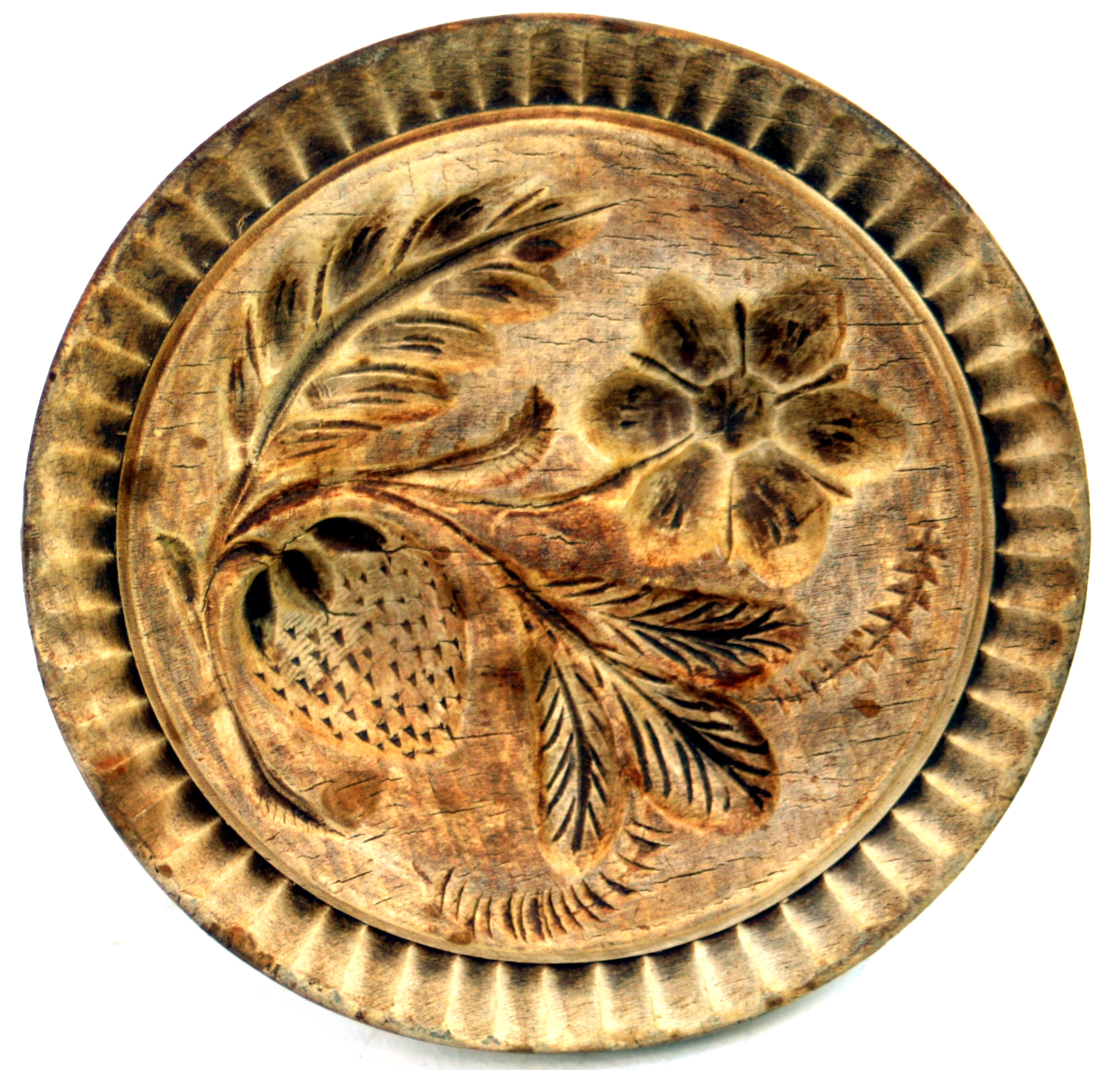Collections by Name | Collections by Region
Paul and Helen Kindig Butter Print and Butter Mold Collection
MSU Museum's extensive collection of butter prints and butter molds dates from the mid- to late-19th century. They were used by farming families throughout the eastern and midwestern United States to make a decorative mark on their butter bound for market. The marks indicated which family creamery their butter came from, allowing buyers to locate their favorite.
Although some molds and prints were made of molded glass, most molds and prints were wood and either carved by hand or made with lathes. Most were made by their owners or artisans within communities; others were the products of small craft production shops or factories. MSU Museum's collection includes many of the different types of designs used, including floral and plant motifs, animals, stars, swirls, and geometric designs, and even portraits and verse. The collection provides examples that can support a wide array of studies - from the technological innovations related to marketing and distributing foodstuffs to the role of ethnicity in foodways.
With the demise of the home dairy, butter prints and molds fell out of use. In 1978 the Kindigs surveyed butter prints held in museum collections to identify regional patterns in the carved designs. The study resulted in a publication and a collection of over 100 molds and prints that they donated to the MSU Museum.
Donors and Fieldworkers
Paul and Helen Kindig
Exhibitions
"Collections Connections," Michigan State University Museum, East Lansing, Michigan, July 2005.
Publications
Paul Kindig, "Butter Prints and Molds", West Chester, Pennsylvania: Schiffer Publishing, Ltd., 1986.

Strawberry and floral butter mold, Fairfield, Connecticut

Mechanical butter mold with cherries





